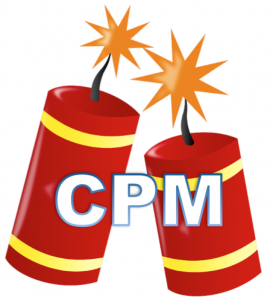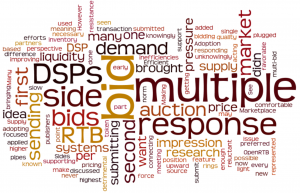When multiple advertisers are bidding for a certain (impression) and more than 1 enter the same bid amount, (each) being the highest, how does the RTB (auction) determine which ad should be displayed.
This question was asked on quora, below is my answer.
 Identical bids are not unheard of, but they are rare. Bid prices are presented as a CPM value with up to five decimal places. That means that the actual impression can bid upon with precision down to eight decimal places. So in that rare event, when there are two or more matching top bids, the winner is chosen at random. This is only the tip of the iceberg, though.
Identical bids are not unheard of, but they are rare. Bid prices are presented as a CPM value with up to five decimal places. That means that the actual impression can bid upon with precision down to eight decimal places. So in that rare event, when there are two or more matching top bids, the winner is chosen at random. This is only the tip of the iceberg, though.
Features are being added to RTB systems that allow for preferential treatment of preferred DSPs, agencies, trading desks and even advertisers. Deals that are struck between site owners and buyers are being executed through the RTB infrastructure. Those deals can supersede standard auction mechanics, resulting in a winning ad from a preferred partner in the presence of matching (or higher) bids from other parties.
As time goes on and the RTB system is exploited for more and more features, having equal footing in an auction will be more rare, relatively speaking. There will always be general auctions where no bids are given special consideration. We are, however, entering an era where premium inventory is available to buyers through RTB. With that inventory comes a more carefully crafted environment to buy and sell.





 For a CPA deal they’re estimating how many acquisitions they can send to the buyer for every thousand ad views. For CPC, how many clicks per thousand ad views. They’re boiling it down to a CPM because that’s how they can compare the deals. It works like this all the way up and down the funnel.
For a CPA deal they’re estimating how many acquisitions they can send to the buyer for every thousand ad views. For CPC, how many clicks per thousand ad views. They’re boiling it down to a CPM because that’s how they can compare the deals. It works like this all the way up and down the funnel. Identical bids are not unheard of, but they are rare. Bid prices are presented as a CPM value with up to five decimal places. That means that the actual impression can bid upon with precision down to eight decimal places. So in that rare event, when there are two or more matching top bids, the winner is chosen at random. This is only the tip of the iceberg, though.
Identical bids are not unheard of, but they are rare. Bid prices are presented as a CPM value with up to five decimal places. That means that the actual impression can bid upon with precision down to eight decimal places. So in that rare event, when there are two or more matching top bids, the winner is chosen at random. This is only the tip of the iceberg, though.

